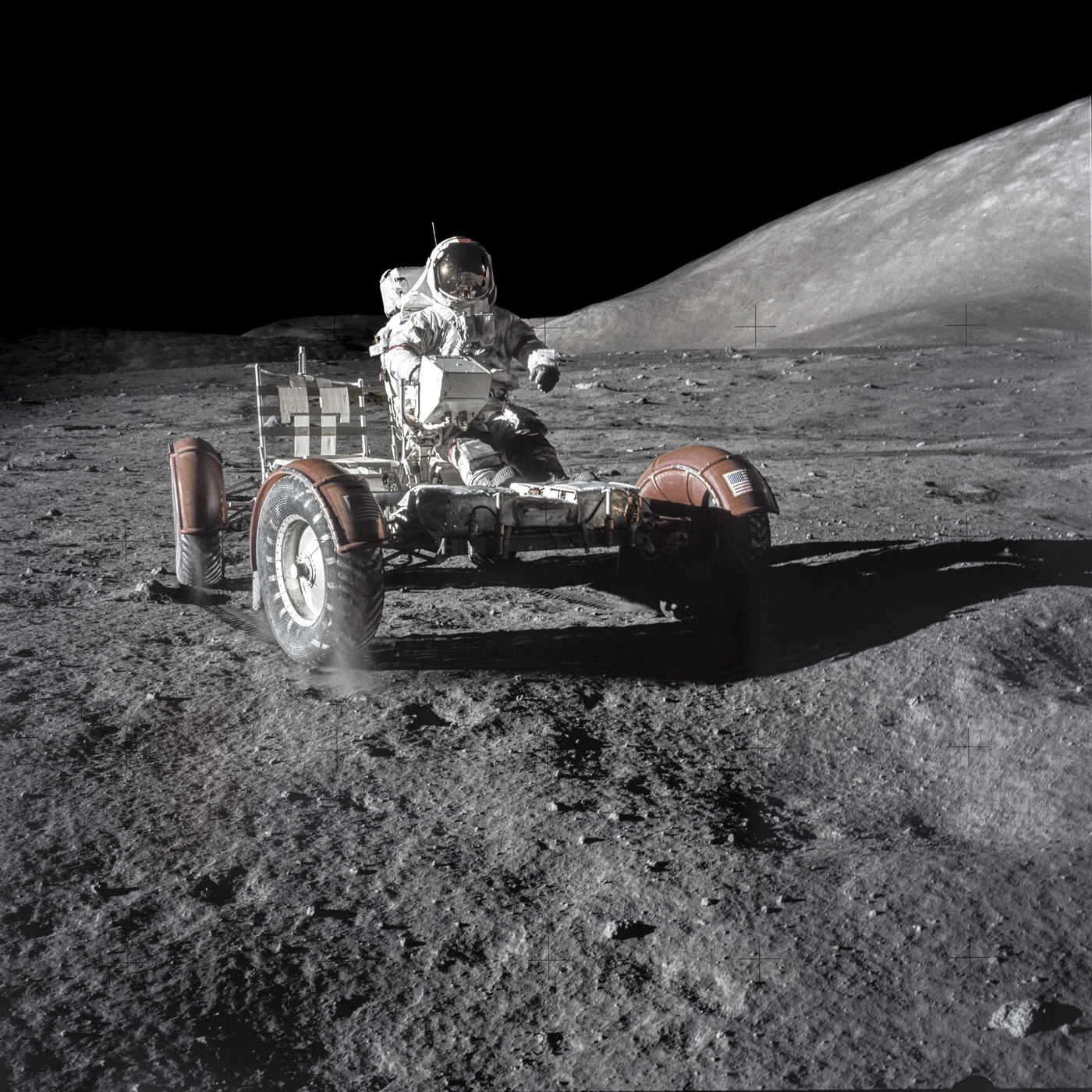Fifty years ago, Apollo 17’s command module splashed down in the Pacific Ocean on December 19, 1972 with Eugene Cernan, Harrison Schmitt, and Ron Evans landing safely back home on Earth after a 12-day voyage to our lone satellite.
It was a record breaking mission, involving the longest EVA, farthest lunar rover excursions, the most photographs taken, and the biggest haul of moon rocks and soil samples returned, putting a triumphant punctuation mark on NASA's sixth and final moon landing.
To mark the occasion and allow readers to fully immerse themselves in the complete Apollo program on the anniversary of NASA's last moonwalk, a lavish new coffee-table book titled "Apollo Remastered" was published this past October from Black Dog & Leventhal. This impressive seven-pound, 432-page volume contains hundreds of digitally remastered images restored from the NASA archives to present the iconic photos in perfect clarity and bold color like never before.
To learn more about the book on the 50th anniversary of Apollo 17, Space.com recently spoke with "Apollo Remastered" author Andy Saunders to discuss the process behind this massive undertaking.
Related: 'Apollo Remastered' features new look at moon mission photography
Apollo Remastered: The Ultimate Photographic Record: was $75 now $66.23 at Amazon.
"Apollo Remastered" shows the Apollo program like you've never seen it before with expert digital restoration of some of the most iconic and historic photographs in NASA's history.
As one of the preeminent experts in NASA digital restoration, British author Andy Saunders has gathered 400 of the most striking and dramatic images taken on all of the Apollo moon missions out of more than 20,000 Hasselblad Data Camera shots and stacked 16mm film frames. Saunders accents each photo using actual mission recordings and transcripts for context.
"We wanted for it to be the ultimate photographic record and I wanted to get as many photographs in on a large scale," Saunders tells Space.com. "To convey the grandeur of the moon landings you need a physically big image.
Get the Space.com Newsletter
Breaking space news, the latest updates on rocket launches, skywatching events and more!
"One thing people ask is if the cameras get better or if they used different equipment, but they didn't. They adapted the cameras very slightly but what they did do is that they got better at taking photographs. Then at the end of every mission they'd critique the photographs and speak to the astronauts that took them."

Using cutting-edge technology and special digital techniques, Saunders was able to revive these vintage photos in a way that will leave readers dumbstruck.
"On Apollo 17, they took far more photographs than on any other mission," he explains. "They took 3,999 hand-held photos. And of those, about 2,500 were taken on the lunar surface and that’s more than Apollo 11, 12, and 14 put together. They did seem to be more conscious of taking posed photographs for example."
Saunders points out that taking posed snapshots wasn't the thing to do during Apollo. Photographs were typically composed for scientific rationale or from a geological point of view.

"The idea was never to idolize the astronauts so they tended not to take many selfies or posed shots of each other," he says. "Apollo 12 might be the one exception. But Apollo 17 has a much higher proportion of those and that may be partly because they were conscious that it was the last human mission for some time. They were also keen to getting the Earth in the background and that was something that I didn't see on any other mission.
"They were a very enthusiastic crew, particularly Gene Cernan. He was quite a gregarious character and in these transcripts I got so much information from him to put in the book."
As an example, Saunders points out a remarkable shot in the book of Commander Eugene Cernan with the American flag and the Earth above him. In the reflection of his visor you can actually see Jack Schmitt crouched on his knees to get the angle correct to capture Cernan, the flag, and Earth.

For Saunders, part of the incentive to do the book was for a more general audience to be aware that there wasn’t just Neil Armstrong and Apollo 11.
"People tend not to focus on 17, although it's very significant." he adds. "And with the 50th anniversary, think of what an important moment that is when fifty years will have passed since we got a human presence on the moon. I've always been keen to highlight the human side of the missions because that's something we tend not to see. We see an anonymous spacesuit with a gold visor.
"But when you can see through the visor, or through a window, or step on board the spacecraft, then we can almost ride along with these space explorers on the greatest of human expeditions and feel as close as we can to walking on the moon ourselves."
"Apollo Remastered" is available now in all bookstores and online retail outlets.
Follow us on Twitter @Spacedotcom or on Facebook.
Join our Space Forums to keep talking space on the latest missions, night sky and more! And if you have a news tip, correction or comment, let us know at: community@space.com.

Jeff Spry is an award-winning screenwriter and veteran freelance journalist covering TV, movies, video games, books, and comics. His work has appeared at SYFY Wire, Inverse, Collider, Bleeding Cool and elsewhere. Jeff lives in beautiful Bend, Oregon amid the ponderosa pines, classic muscle cars, a crypt of collector horror comics, and two loyal English Setters.

